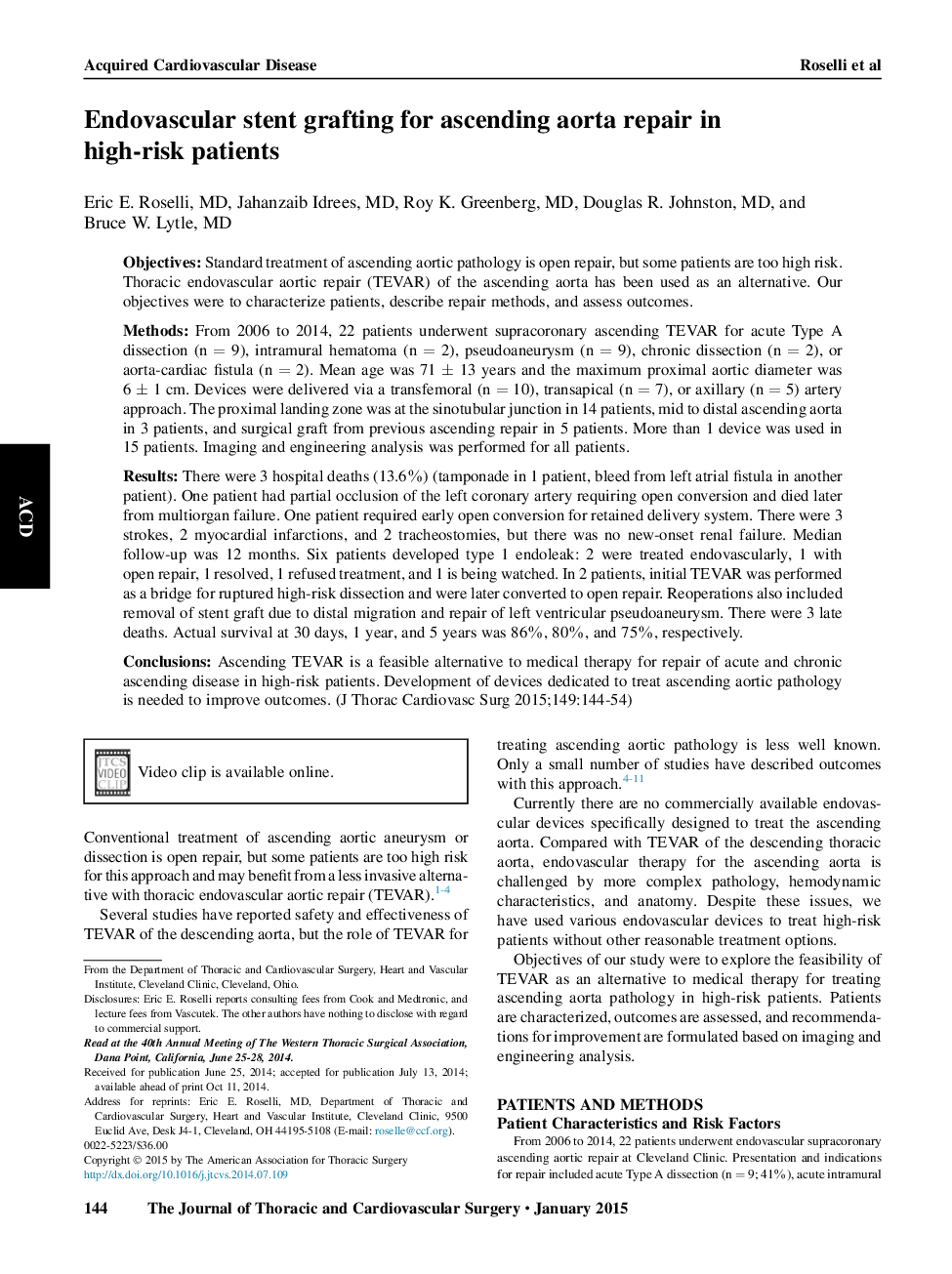| کد مقاله | کد نشریه | سال انتشار | مقاله انگلیسی | نسخه تمام متن |
|---|---|---|---|---|
| 2980053 | 1578603 | 2015 | 11 صفحه PDF | دانلود رایگان |
ObjectivesStandard treatment of ascending aortic pathology is open repair, but some patients are too high risk. Thoracic endovascular aortic repair (TEVAR) of the ascending aorta has been used as an alternative. Our objectives were to characterize patients, describe repair methods, and assess outcomes.MethodsFrom 2006 to 2014, 22 patients underwent supracoronary ascending TEVAR for acute Type A dissection (n = 9), intramural hematoma (n = 2), pseudoaneurysm (n = 9), chronic dissection (n = 2), or aorta-cardiac fistula (n = 2). Mean age was 71 ± 13 years and the maximum proximal aortic diameter was 6 ± 1 cm. Devices were delivered via a transfemoral (n = 10), transapical (n = 7), or axillary (n = 5) artery approach. The proximal landing zone was at the sinotubular junction in 14 patients, mid to distal ascending aorta in 3 patients, and surgical graft from previous ascending repair in 5 patients. More than 1 device was used in 15 patients. Imaging and engineering analysis was performed for all patients.ResultsThere were 3 hospital deaths (13.6%) (tamponade in 1 patient, bleed from left atrial fistula in another patient). One patient had partial occlusion of the left coronary artery requiring open conversion and died later from multiorgan failure. One patient required early open conversion for retained delivery system. There were 3 strokes, 2 myocardial infarctions, and 2 tracheostomies, but there was no new-onset renal failure. Median follow-up was 12 months. Six patients developed type 1 endoleak: 2 were treated endovascularly, 1 with open repair, 1 resolved, 1 refused treatment, and 1 is being watched. In 2 patients, initial TEVAR was performed as a bridge for ruptured high-risk dissection and were later converted to open repair. Reoperations also included removal of stent graft due to distal migration and repair of left ventricular pseudoaneurysm. There were 3 late deaths. Actual survival at 30 days, 1 year, and 5 years was 86%, 80%, and 75%, respectively.ConclusionsAscending TEVAR is a feasible alternative to medical therapy for repair of acute and chronic ascending disease in high-risk patients. Development of devices dedicated to treat ascending aortic pathology is needed to improve outcomes.
Journal: The Journal of Thoracic and Cardiovascular Surgery - Volume 149, Issue 1, January 2015, Pages 144–154
